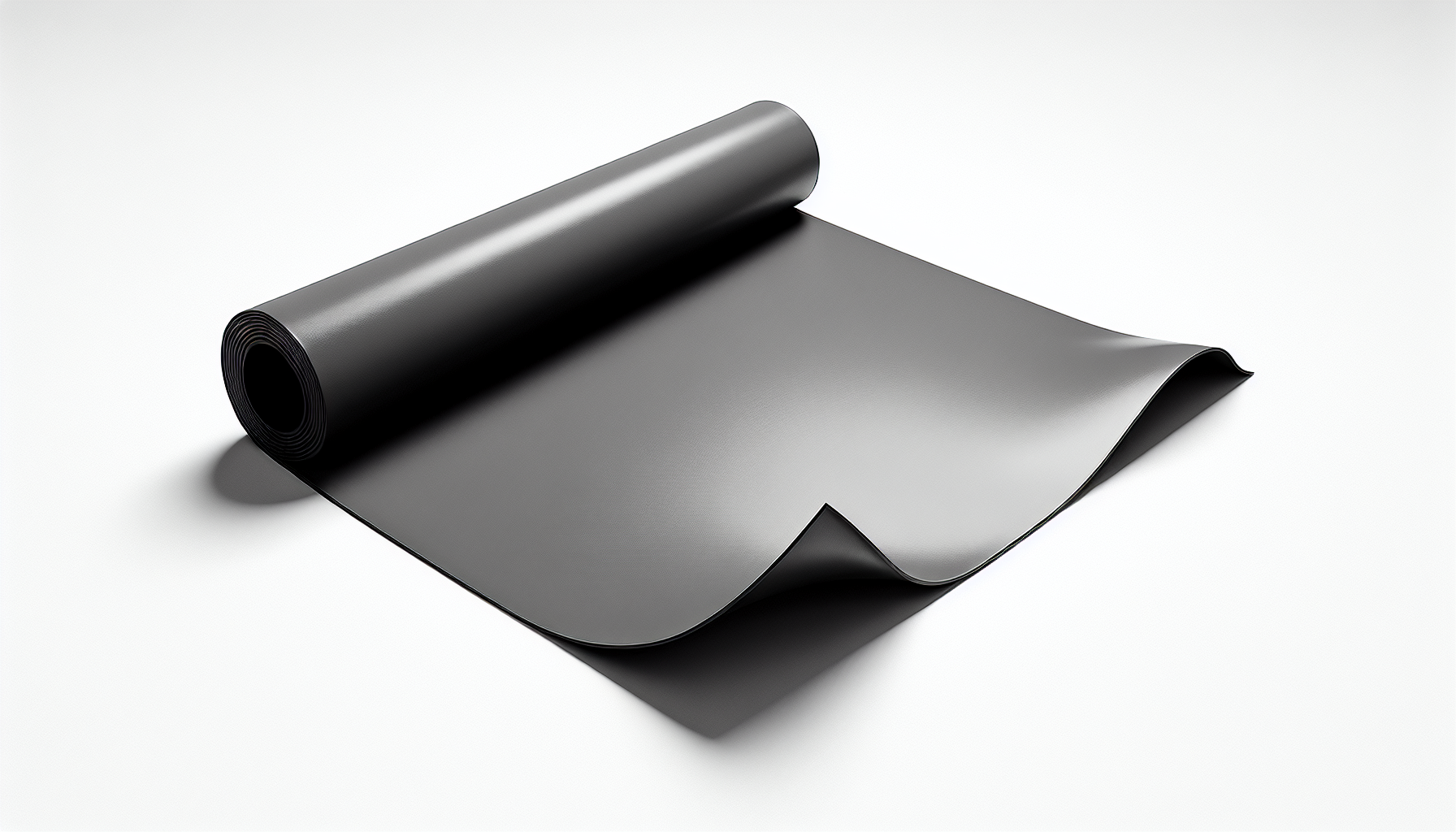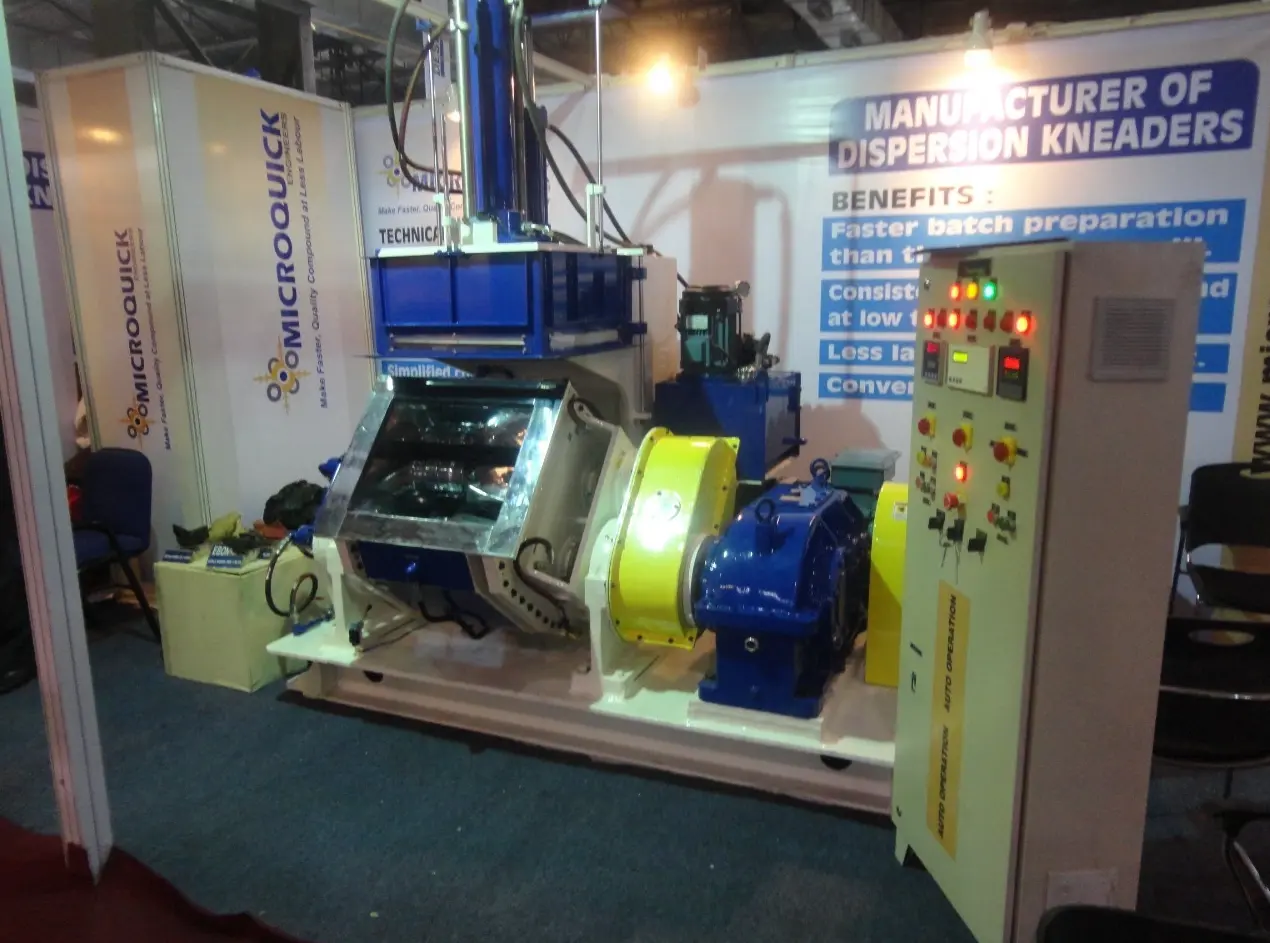Introduction
Importance of rubber compound quality in various industries
Rubber compound quality plays a crucial role across numerous industries, such as automotive, industrial applications, consumer products, healthcare, and electrical. High-quality rubber compounds ensure durability, performance, and safety in diverse applications.
Challenges faced in achieving superior rubber compound quality
Obtaining superior rubber compound quality is often hindered by factors such as compound viscosity, poor dispersion, scorch, and bloom. These challenges demand innovative solutions for consistent and efficient production.
Role of hydraulic dispersion kneaders in improving rubber compound quality
Hydraulic rubber dispersion kneaders offer an effective solution for achieving superior rubber compound quality. These kneaders ensure excellent dispersion of ingredients, consistent quality compounding, and faster production, meeting the demands of diverse industries.
Factors Affecting Rubber Compound Quality
In order to achieve superior rubber compound quality, it is essential to understand the factors that can impact the quality. The best way to overcome these factors and ensure high-quality rubber compounds is through the use of a hydraulic rubber dispersion kneader. In this section, we will discuss four major factors that affect rubber compound quality.
Compound Viscosity
The viscosity of a rubber compound is an important parameter that affects its processability and final properties. High viscosity compounds can be difficult to process and may require more energy and time to mix and shape. On the other hand, low viscosity compounds may not have the desired strength and durability. Therefore, it is crucial to select the appropriate viscosity for a specific application to ensure optimum performance and ease of processing.
Poor Dispersion
Dispersion is the process of uniformly distributing the ingredients of a rubber compound throughout the mixture. Poor dispersion can lead to inconsistent properties, resulting in reduced performance and durability of the final product. Inadequate dispersion can be due to several factors, such as insufficient mixing time, improper mixing equipment, or incorrect mixing techniques. Utilizing a hydraulic rubber dispersion kneader can significantly improve the dispersion of ingredients, leading to superior rubber compound quality.
Scorch
Scorch is the premature curing of a rubber compound during processing, which can result in reduced processability, poor surface finish, and decreased physical properties of the final product. Factors that can contribute to scorch include high processing temperatures, long mixing times, and the presence of certain additives. To avoid scorch, it is essential to carefully control the processing conditions and select appropriate additives for the rubber compound.
Bloom
Bloom is the migration of low molecular weight ingredients, such as additives and curatives, to the surface of a rubber compound. This phenomenon can lead to a change in the compound’s appearance and adversely affect its physical properties and performance. To minimize bloom, it is important to choose the right additives and curatives, as well as maintain proper storage conditions for the rubber compound.
In conclusion, understanding these factors and utilizing a hydraulic rubber dispersion kneader can help achieve superior rubber compound quality, leading to enhanced performance and durability of the final product.
Hydraulic Rubber Dispersion Kneaders: A Solution for Superior Rubber Compound Quality
One of the best ways to achieve superior rubber compound quality is through the use of hydraulic rubber dispersion kneaders. In this section, we will explore how these kneaders work, their main features, advantages, and their applications in various industries.
How Hydraulic Dispersion Kneaders Work
Hydraulic dispersion kneaders operate by applying hydraulic pressure to mix and blend rubber ingredients efficiently. They create a uniform dispersion of the ingredients, resulting in a consistent and high-quality rubber compound. Through the continuous application of hydraulic pressure, these kneaders effectively break down and disperse the various ingredients, ensuring a uniform mixture throughout the entire batch of rubber compound.
Main Features of Microquick Engineers’ Hydraulic Dispersion Kneaders
Microquick Engineers’ hydraulic dispersion kneaders offer several key features that contribute to their ability to produce high-quality rubber compounds:
-
1. Automated continuous hydraulic compression on ingredients for efficient mixing and blending.
-
2. Batch preparation time of 7-12 minutes, allowing for faster production.
-
3. Excellent dispersion of ingredients, ensuring a uniform and consistent rubber compound.
-
4. Consistent quality compounding, resulting in a reliable final product.
-
5. Wear resistance of the mixing chamber and rotors, ensuring durability and longevity of the equipment.
Advantages of Using Hydraulic Dispersion Kneaders
There are several advantages to using hydraulic dispersion kneaders for rubber compounding:
-
1. Faster production due to reduced batch preparation time.
-
2. Automated and consistent batch preparation, ensuring uniform quality across all batches.
-
3. Operator-friendly design, making it easy to use and maintain the equipment.
-
4. Compact size, requiring less space in the production facility.
-
5. Low energy consumption, reducing operational costs and environmental impact.
Applications of Hydraulic Dispersion Kneaders in Different Industries
Hydraulic dispersion kneaders are versatile and can be used across various industries for different applications:
-
1. Automotive industry: Production of high-quality rubber components, such as tires, seals, and gaskets.
-
2. Industrial applications: Manufacturing of rubber components for machinery, equipment, and infrastructure.
-
3. Consumer products: Production of rubber goods, such as footwear, sporting equipment, and household items.
-
4. Healthcare industry: Manufacturing of medical-grade rubber components, such as tubing, seals, and gaskets.
-
5. Electrical industry: Production of rubber insulation and sealing components for electrical systems and devices.
Custom Rubber Compounding: Meeting Specific Industry Requirements
Custom rubber compounding plays a crucial role in achieving high-quality rubber compounds tailored to meet the specific requirements of various industries. The best way to achieve superior rubber compound quality is through the use of hydraulic rubber dispersion kneaders, as they provide excellent dispersion and consistent quality compounding.
Importance of Custom Mixing in Achieving High-Quality Rubber Compounds
Custom mixing ensures that the rubber compounds are formulated to meet the unique performance, processing, and regulatory requirements of different industries and applications. By combining the appropriate raw materials, additives, and processing techniques, custom rubber compounding can result in superior product performance, durability, and overall quality.
Factors to Consider When Selecting Compounds for a Rubber Product
When selecting compounds for a rubber product, various factors must be considered, including the end-use application, performance requirements, regulatory compliance, and processing characteristics. Additionally, factors such as tensile strength, elongation, hardness, and resistance to chemicals, heat, and abrasion should be taken into account when choosing the right rubber compound.
Addressing Industry-Specific Challenges with Custom Rubber Compounds
Industry-specific challenges can be addressed through the development of custom rubber compounds that cater to the unique demands of each application. For example, automotive components may require rubber compounds with excellent resistance to heat, oil, and abrasion, while healthcare products may necessitate rubber compounds with biocompatibility and resistance to sterilization processes. By tailoring the rubber compounds to meet these specific needs, manufacturers can ensure the highest quality and performance of their products.
Advance Auto Parts and Their Role in Rubber Compound Quality
Advance auto parts play a significant role in maintaining rubber compound quality, as they often require high-performance rubber materials to ensure the safety and reliability of automotive systems. By utilizing custom rubber compounds designed specifically for these applications, manufacturers can develop high-quality advance auto parts that meet the stringent performance and durability requirements of the automotive industry.
Quality Control and Testing: Ensuring Superior Rubber Compound Quality
In the rubber compounding process, maintaining a high level of quality control is crucial for producing consistent, reliable, and superior products. One of the best ways to achieve superior rubber compound quality is through the use of a hydraulic rubber dispersion kneader, as it ensures excellent dispersion and consistent quality compounding.
The Importance of Quality Control in Rubber Compounding
Quality control plays a vital role in rubber compounding, as it helps manufacturers identify and rectify any potential issues early in the production process. By implementing stringent quality control measures, manufacturers can ensure that the rubber compounds they produce meet the exact specifications and performance requirements of their customers. Moreover, quality control helps in minimizing waste, reducing costs, and maintaining the overall efficiency of the production process.
Quality Control Measures Employed by Microquick Engineers
Microquick Engineers, a leading manufacturer and exporter of hydraulic dispersion kneaders, is committed to ensuring superior rubber compound quality through the implementation of rigorous quality control measures. These measures include:
- Continuous monitoring of the production process to detect and correct any deviations from the set standards.
- Regular inspection of raw materials and finished products to ensure they meet the required quality criteria.
- Use of advanced testing equipment and methodologies to assess the performance and durability of rubber compounds.
- Adherence to industry-specific quality standards and certifications, such as ISO 9001:2015.
- Continuous improvement of production processes and technologies to enhance the quality and efficiency of rubber compounding.
Testing Methodologies for Rubber Compound Quality
To ensure the quality of rubber compounds, various testing methodologies are employed throughout the production process. Some of the common testing methods include:
- Tensile strength testing: This test measures the maximum force a rubber compound can withstand before breaking. It helps in determining the compound’s durability and resistance to wear and tear.
- Elongation at break testing: This test measures the extent to which a rubber compound can be stretched before it breaks. It helps in assessing the compound’s flexibility and elasticity.
- Compression set testing: This test measures the ability of a rubber compound to return to its original shape after being compressed. It helps in evaluating the compound’s resilience and resistance to deformation.
- Hardness testing: This test measures the resistance of a rubber compound to indentation. It helps in determining the compound’s stiffness and suitability for various applications.
- Abrasion resistance testing: This test measures the wear resistance of a rubber compound when subjected to friction. It helps in assessing the compound’s durability in abrasive environments.
In conclusion, achieving superior rubber compound quality requires a combination of advanced technology, such as hydraulic rubber dispersion kneaders, and stringent quality control measures. By investing in quality control and testing, manufacturers can ensure the production of high-quality rubber compounds that meet the specific requirements and performance expectations of their customers.
Conclusion
In conclusion, achieving superior rubber compound quality is of utmost importance for various industries, ranging from automotive to consumer products and healthcare. As we’ve discussed, one of the best ways to accomplish this is through the use of hydraulic rubber dispersion kneaders, which offer numerous benefits and ensure consistent quality compounding.
Hydraulic dispersion kneaders, such as those manufactured by Microquick Engineers, play a critical role in improving rubber compound quality. Their innovative design and features, such as automated continuous hydraulic compression on ingredients, short batch preparation times, excellent dispersion of ingredients, and wear resistance of the mixing chamber and rotors, contribute to producing high-quality rubber compounds.
As we strive for superior rubber compound quality, it is essential to consider custom rubber compounding and quality control measures as well. These processes ensure that the rubber compounds meet industry-specific requirements and maintain consistent quality across different applications.
With this knowledge in hand, we encourage you to explore Microquick Engineers’ hydraulic dispersion kneaders and other products to help you achieve superior rubber compound quality in your applications. By investing in the right equipment and processes, you can ensure that your rubber compounds meet the highest standards and provide a strong foundation for success in your industry.
Call-to-action: Discover the benefits of Microquick Engineers’ hydraulic dispersion kneaders by visiting their website and exploring their range of products. Improve your rubber compound quality today and stay ahead in your industry.
Explore Quality Solutions
As we have seen, achieving superior rubber compound quality is crucial for various industries, and the best way to achieve it is through hydraulic rubber dispersion kneaders. To further explore the features, applications, and technical aspects of Microquick Engineers’ solutions, check out the following resources:
-
Microquick Engineers’ Brochure
-
Exhibition Information
-
Application Details
-
Installation Guidelines
-
Technical Features
-
Hydraulic Dispersion Kneader
-
Vacuum Type Automatic Compression Rubber Moulding Machines
With over 25 years of experience and a range of innovative products, Microquick Engineers is committed to helping you achieve superior rubber compound quality. Learn more about their hydraulic dispersion kneaders and enhance your rubber compounding process today.



